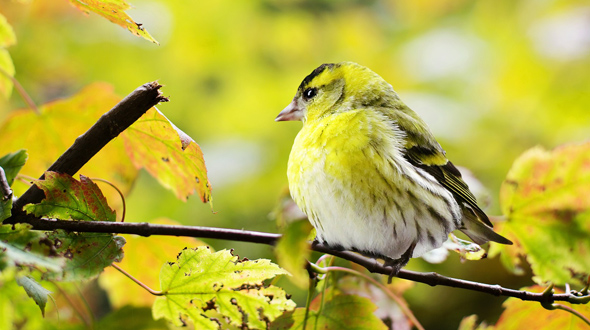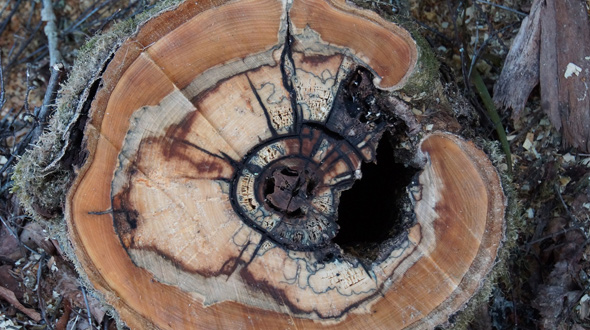
That concerning tree in your yard may be diseased and risky to leave unaddressed. However, inaction is what often leads to severe and avoidable damage.
While diseased trees can pose a threat to your landscape, property, and surrounding people, identifying and treating such cases properly can mitigate and prevent disastrous tree fall situations.
toddsmariettatreeservices.com names five common tree diseases in Marietta GA, how to identify, treat, and when to have the tree evaluated by a professional.
Fire Blight Symptoms and Treatment
Fire blight is a disease that flourishes in humid, rainy weather when the average temperature rises to 60 degrees Fahrenheit and above.
Symptoms – As the name implies, symptoms of this disease cause the appearance of fire scorching or burning. When inspecting your tree, look for these signs:
• Infected flowers turn black and die.
• Twigs and stems turn black and curl over.
• Branches appear scorched as their leaves turn black and shrivel up.
• Cankers will appear on branches and the trunk.
Transmission – Fire blight is easily transmitted to other trees, shrubs, and plants by birds, animals, splashing water, and unsterile gardening tools.

Treatment – The following measures should be taken immediately to eliminate and prevent the spread of fire blight:
• Apply a copper fungicide before the flowering season.
• Extensive pruning of all affected areas.
• Take pest control measures to eliminate ants and other insects which may transmit the disease.
• Convert your watering method to drip lines. (Avoid sprinklers or spraying)
• Sanitize gardening equipment with a water and bleach solution after use on infected landscapes.
Call a Professional – When more than 25% of a tree must be removed, seek the advice of a professional tree service or arborist. It may be necessary to remove the tree altogether. Likewise, when multiple trees, shrubs, and plants are infected, a professional can help you devise a plan to halt the disease.
Powdery Mildew Symptoms and Treatment
Much like fire blight, powdery mildew thrives in the springtime when temperatures range from 60 to 80 degrees Fahrenheit. There are several fungi which can produce powdery mildew.
Symptoms – As the name suggests, powdery mildew can appear on any part of its host and resembles white or slightly off-white mildew. Numerous spores begin to emerge as the fungi mature.
Transmission – Insects such as aphids are the principal means of transmission. However, when spores are released, splashing water or wind may spread the fungi.

Treatment – The following measures will help you control and eliminate powdery mildew from your landscape:
• Apply non-chemical organic fungicides such as milk, bicarbonates, and oil. An effective solution is diluted at 1 part fungicide to 10 parts water. This fungicidal mix produces outstanding results when used for preventative measures or sprayed directly on the infected plant.
• Applying a neem oil solution disrupts the fungus’ metabolism – preventing spore production.
Call a Professional – When topical treatment can’t stop powdery mildew, or when it eliminates powdery mildew, but your tree’s health continues to decline, there may be another pathogen or insect at work. Request an inspection and evaluation from a tree care professional.
Anthracnose Symptoms and Treatment
Anthracnose thrives in the springtime with prolonged periods of rainfall and when temperatures are consistently mild.
Symptoms – The symptoms of anthracnose include the following:
• Bud and twig death
• Dead spots on leaves
• Dead tissue or blotches along and between leaf veins
• Unseasonal or premature leaf-drop
• Lesions known as cankers in tree bark (open wounds)
• Dark colored pimple-like fruiting structures (acervuli) on the underside of leaves.

Transmission – Similar to fire blight, anthracnose is easily transmitted to other trees, shrubs, and plants by wildlife, splashing water, rain, and unsterile gardening tools.
Anthracnose fungi (there are several fungi which can cause anthracnose) can survive the winter months in fallen leaves, or in cankers formed in the bark of branches or the trunk.
Treatment – The following measures should be taken immediately to eliminate and prevent the spread of anthracnose:
• Extensive pruning of all affected parts.
• Utilize a fire pit or bonfire to destroy affected clippings and foliage.
• Convert your watering systems to drip lines. (Avoid sprinklers or spraying)
• Sanitize gardening equipment with a water and bleach solution after use on infected landscapes.
Read the following article for more on How to Identify, Treat, and Prevent Anthracnose.
Call a Professional – When 25% or more of a tree must be removed, seek the advice and assistance of an arborist or reputable tree service.
It may be necessary to remove the tree altogether. Without treating anthracnose, you will be leaving your tree susceptible to other infections and infestations.
Root Rot Symptoms and Treatment
Changes in landscaping, soil compaction, soil composition, or persistent rains may cause root rot.
Symptoms – Severe and fast branch die-back, premature color change of the leaves, widespread leaf spots, sap coming from the bark, and mushrooms around the root flare may all indicate root rot.
Transmission – Root rot is typically the result of poor drainage or changes in the soil composition and texture. This either kills the roots or allows access to pathogens, which weakens and eventually kills them.
Treatment – If your tree is diagnosed with root rot, the recommended treatment is to have the tree removed.

To prevent further cases of root rot, ensure that the soil in your landscape is well-drained, and that roots are protected from soil compaction.
Call a Professional – If you suspect that a tree is suffering and dying from root rot, call a professional to have the tree evaluated immediately. Depending on the size of the tree and the amount of damage to the roots, the tree may fall at any time.
Heart Rot Symptoms and Treatment
When a fungal disease causes the softening and decay of the wood found at the center of a tree’s trunk and branches, this is known as heart rot.
The softening of the heartwood leaves a tree vulnerable to the pressure of its own weight and prone to collapse.
Symptoms – A reliable indicator that heart rot is present within a tree is the presence of fungus conks or mushrooms growing from the tree’s trunk or branches.
Transmission – Heart rot is able to attack the heartwood of a tree through damaged bark or improper pruning.

Treatment – Control of heart rot is achieved by:
• Maintaining your trees healthy and vigorous.
• Using proper pruning techniques.
• Having the trees inspected by an arborist annually.
• Providing post-storm care and maintenance.
Heart rot affects trees across the world. When trees are healthy, they are able to isolate and stop this disease through a process called compartmentalization.
Call a Professional – If you suspect that your tree is suffering from heart rot, do not hesitate to call a professional tree service to evaluate the tree and recommend a course of action. Act promptly, as trees that suffer from this disease can cause catastrophic damages when they collapse unexpectedly.
Tree Disease and Landscape Health
Because diseased trees are susceptible to fall at any time, it is imperative to be educated and swift in taking action to treat these disease cases.
Discovering how to identify and treat the diseases that are common in Marietta Georgia is a great start.
Being informed and giving more attention to your trees may seem like extra effort, but sleeping well at night knowing your property and people are safe is worth the energy.
Sources:
http://extension.uga.edu/publications/detail.html?number=B1238&title=Common%20Landscape%20Diseases%20in%20Georgia
http://www.gfc.state.ga.us/community-forests/management/tree-care/insects-and-diseases/index.cfm
https://plus.google.com/+Toddsmariettatreeservices
Todd’s Marietta Tree Services
(678) 505-0266

No comments:
Post a Comment